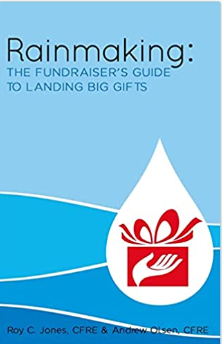If you are raising money for a charity or not-for-profit in America today you have a real problem… you are not the only one. In fact there are over 2 million not-for-profit organizations in the United States. That’s roughly 1 non-profit for every 150 households.
In your community this could translate into something even more dramatic. With the rise of national organizations that have regional and local affiliates that number could be more like one non-profit group for every 100 families or even one out of 75. Of course, we all know that not every household donates a portion of their income to charity. So for those that do, the competition for their donated dollar becomes nothing short of intense.
The most recent studies document that the average household that contributes to charity gives to more than six different not-for-profit organizations.[i] The donors that give, in most cases, give to multiple charities. We call them multi-donors or “multis” in the fundraising industry. They are the cream of the crop that can yield much needed income to your organization.
As a fundraiser when you find a “multi” you bear down and focus your fundraising attention on “multi” households. You increase the frequency of appeals to these households using the mail, internet and telephone. You try to involve these prospective funders in your charity and encourage them to volunteer. You assign the biggest donors to senior staffers to ensure that they are thanked after every gift, large or small, and to begin a moves management process to upgrade giving from this family from one year to the next.
If you have figured out who the “multi” donors are in your community, guess who else has? That’s right, the five other charities that this family supports each year know it too. Do you want to guess what your competitors in the non-profit community are doing? The same thing you are doing, increasing the amount of contact with the donor. The amount of communications that multi-donors receive is nothing short of alarming.
Let’s say that your organization includes the newsletter, event invitations, volunteer opportunities and, of course, 14 appeals a year. If you total it all up, including receipt letters, you are mailing your multi-donors 24 times a year. If six other charities are doing the same thing that is 168 letters a year, not including emails, thank you calls, hand written thank you notes and cultivation calls. Out of 260 business days a year… that is a HUGE amount of contact.
Now, are you ready for the curve ball? What happens when a multi-donor stops supporting a particular charity? In most cases, after the donor has been intensely targeted to be reactivated with special phone calls and hard hitting “why have you forgotten us” appeal letters, the charity simply hands over the name to their local list broker in order to continue generating some kind of income from the name. Under the guise of stewardship to the donors that remain with their organization, fundraisers will put the name on the list rental market along with their other lapsed donors. This way the charity can generate as much as $150 per thousand for the not-for-profit organization.
Now let’s see, the donor is already getting 168 letters a year. Let’s say that just three charities also put their name in the list rental hopper for some extra net revenue. Being conservative, let’s say that the list broker only rents the name twice a month for each organization. If the donor responds to just one rental appeal a month, the cultivation process for each new organization starts all over again. Guess what, you have easily taken this household from 168 letters a year to well over 500. Depending on the timing of appeals some multi-donors will receive as many as 6 to 10 appeals a day. That’s right, ten appeals a day!
I said early the competition for multi-donors by the 150 charities in your community was “intense”. Let me correct that… the competition in the mail box is ferocious!
Of course, I don’t want to forget the elephant in the room, the downturn in the U.S. economy! Make no mistake about it, people are hurting and giving less to charity because of it. In 2007 Americans gave nearly $310 billion to charity. That number plummeted to $280 million in 2009. Between 2010 and 2011 the number has slowly etched up to $293 billion, but we are still far away from returning to the record amount of giving in 2007.[ii]
Of the $293 million donated to charity in 2011 nearly 75% was donated by individuals. This surprises some, but businesses, corporations and foundations have never contributed the lion’s share of the gifts to charity.
If your goal is to boost the number of major gifts your charity receives the key thing to remember to start with the basics. If you want to develop a major gift fundraising program that produces sound financial results year in and year out, stick to the fundamentals. Your direct response funding strategies should be naturally upgrading donors from one giving level to the next. Ultimately, your program should guide those individuals with large giving capacity to increase their giving year after year.
Remember, the charity that gets the donation each day is the one that is “top of mail box”. Which letter each day will get the donors attention… and touch their heart? To quote a famous civil war general, “He who get’s there the firstest with the mostest wins…”


